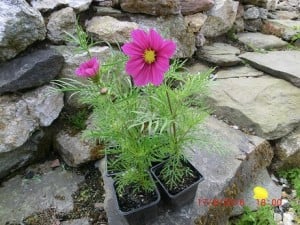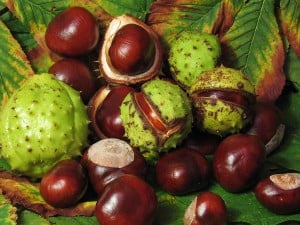Fill gaps in your garden
The risk of frost is over (in south west England) so annual bedding plants are out along my garden path and in the border I can see from the kitchen. Young Cosmos and Verbena bonarensis will grow fast. But there are gaps. Some will soon be filled with growth from last year’s new or divided plants. Others won't. Read on to find out how to fill gaps in your garden.
Why?
Gaps don't help the view; worse, weeds fill gaps!
How?
Mum’s solution, which she said was learned from Geoff Hamilton’s BBC gardening programmes, is to fill a plastic pot (about 30cm across) with good soil and either sow seeds of annuals or plant small (plug) plants of annuals or half hardy plants in it. Dig a good-sized hole and bury the whole pot in the gap. She kept a few pots ready for gaps due to unexpected slug attack or a failed plant, and filled the gap before anyone noticed.
Fill gaps in your garden with pots
Plants to fill gaps in your garden depend on the look you want.
Soft and gentle? Try:
- quick growing annuals like blue cornflowers and orange Californian poppies (Eschscholzia)
- young plants of Cosmos in white or pink shades
- half hardy tall, purple Verbena bonarensis
- dry loving, and sometimes choosy, Echinacea
- tall and floaty annual Ammi majus
Stronger, more vibrant colours? Try:
- dahlias, and keeping these in pots helps later in the year when you need to protect the tubers from frost
- fun short sunflowers like ' Teddy Bear '
- snapdragons, which as an added bonus may self seed and over winter for next year
- marigolds, providing colour until the first frost.

Marigolds fill gaps with colour until the first frost. Marigold-calendula-officianalis-and-sky.-By-Berdan-Own-work-CC-BY-SA-3.0-httpscommons.wikimedia.orgwindex.phpcurid3490955.jpg
Pots that fill gaps are just like your other pots - they need to be watered and fed regularly. The RHS guidance on fertilisers can help you find what will make your flowers grow.
Which bean?
Beans are a gardener’s delight. Easy to grow, lovely flowers, great taste, and no air miles! Runner beans with bright red flowers are my childhood memory. Climbing French beans with different coloured pods are the new kids on the block: compared to runner beans, they prefer a drier soil and may suit gardens with free draining and sunny soils, but don’t do as well in cold or dull weather . Gardeners' experiences of these different beans can help you choose which to grow. Try this blog for a starter.
Sign up for our emails below, so we can send you blogs on gardening tips, as well as updates on our sales, so you don’t miss out on those garden furniture bargains!











